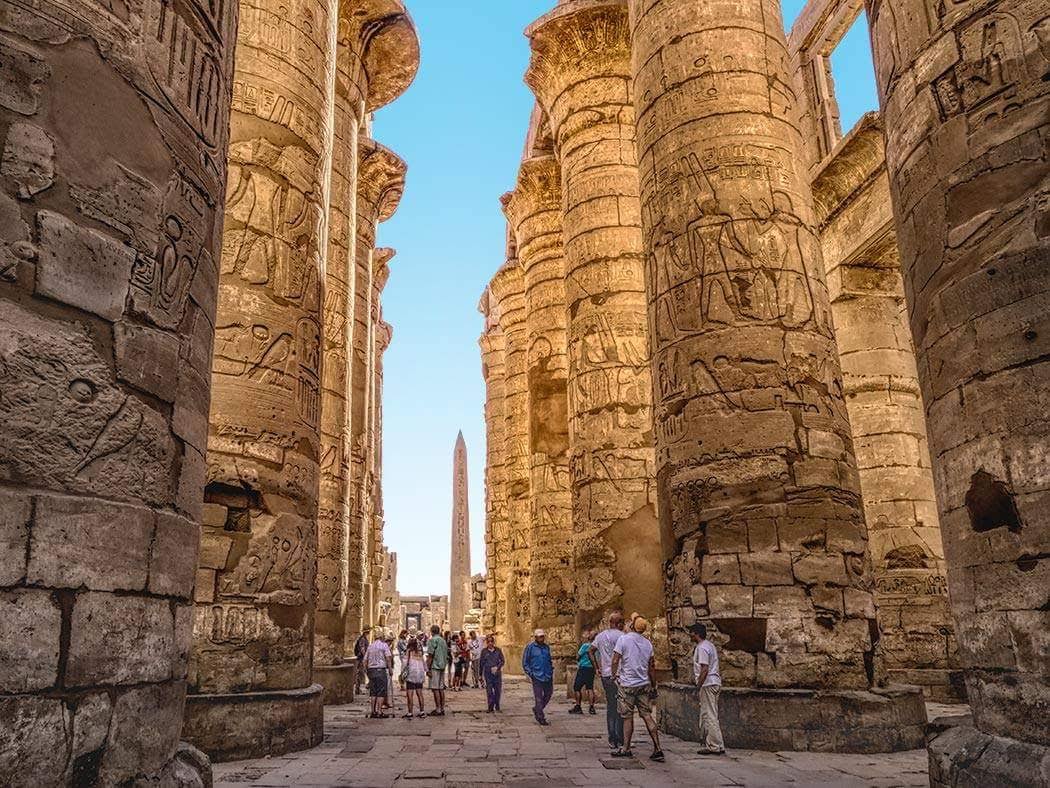Unveiling the Mysteries of Karnak Temple in Luxor , is one of the most famous and largest temples in Egypt. It is a symbol of the country’s ancient past and is an architectural masterpiece.
Karnak Temple in Luxor stands as a testament to the grandeur and architectural prowess of ancient Egypt. With its towering columns, intricate reliefs, and captivating history, this majestic temple complex continues to awe and inspire visitors from around the world. In this blog post, we will delve into the captivating world of Karnak Temple, exploring its history, significance, and notable features.
The Karnak Temple Complex is located along the East Bank of the Nile River about 3 miles north of Luxor. It is one of the largest ancient religious complexes in the world. The site is a major pilgrimage destination for millions of tourists each year. It is a masterpiece of ancient architecture that is a must-see when visiting Egypt. Visitors can explore the temple’s intricate carvings and statues, and learn more about the history of Egypt.
1: Historical Significance
Karnak Temple, dedicated to the Theban Triad of Amun, Mut, and Khonsu, was constructed over several centuries, with each successive pharaoh leaving its mark on its evolving design. The temple served as the religious epicenter of ancient Thebes (modern-day Luxor), and its construction began during the Middle Kingdom era. Its significance grew under powerful pharaohs like Hatshepsut and Ramses II, each adding their contributions to the temple’s magnificence.
2- Architectural Marvels
One of the most striking aspects of Karnak Temple is its sheer scale. From the imposing pylons at the entrance to the expansive hypostyle hall, visitors are greeted by a grandeur that is hard to match. The hypostyle hall, with its forest of towering columns adorned with intricate hieroglyphs and carvings, is a sight to behold. The temple’s sacred lake, used for ritual purification, adds a serene touch to the overall architectural landscape.
3-Reliefs and Symbolism of Karnak temple
The walls of Karnak Temple are adorned with beautifully preserved reliefs that depict scenes from ancient Egyptian mythology, historical events, and religious rituals. These intricate carvings provide insights into the beliefs, traditions, and daily life of the ancient Egyptians. From the sacred barks used during religious processions to depictions of pharaohs making offerings to the gods, each relief tells a story that transports visitors back in time.
4- Hidden Chambers and Discoveries
Over the years, archaeologists have unearthed hidden chambers and made remarkable discoveries within the vast complex of Karnak Temple. These discoveries include statues, obelisks, and even the Avenue of Sphinxes that once connected Karnak Temple to Luxor Temple. Exploring lesser-known areas of the temple complex reveals a wealth of archaeological wonders waiting to be uncovered.
4- Nighttime Spectacle
The Temple of Karnak takes on an entirely different ambiance at night. As the sun sets, the temple is illuminated, casting a warm golden glow that enhances its beauty and mystique. Visitors can witness the Karnak Sound and Light Show, a captivating audiovisual experience that brings the temple’s history to life through a stunning display of lights, music, and narration. It is a truly enchanting way to immerse oneself in the ancient tales of Luxor.
Karnak Temple in Luxor is a remarkable example of ancient Egyptian architecture and spirituality that cannot be ignored. From its historical significance to its architectural marvels and hidden chambers, Karnak Temple continues to be a testament to the rich cultural heritage of Egypt. Visiting this extraordinary site allows us to connect with the past and gain a deeper understanding of the ancient world.
Jana Tours offers a variety of tours to Karnak Temple, including tours with an experienced guide. The tours include an exploration of the temple’s ancient ruins and an up-close look at the intricate carvings and statues, and The Luxor tours are tailored to suit the interests of each group. The Luxor tours also include visits to other nearby sites such as Luxor Temple and the Valley of the Kings. and More.





Reviews
There are no reviews yet.